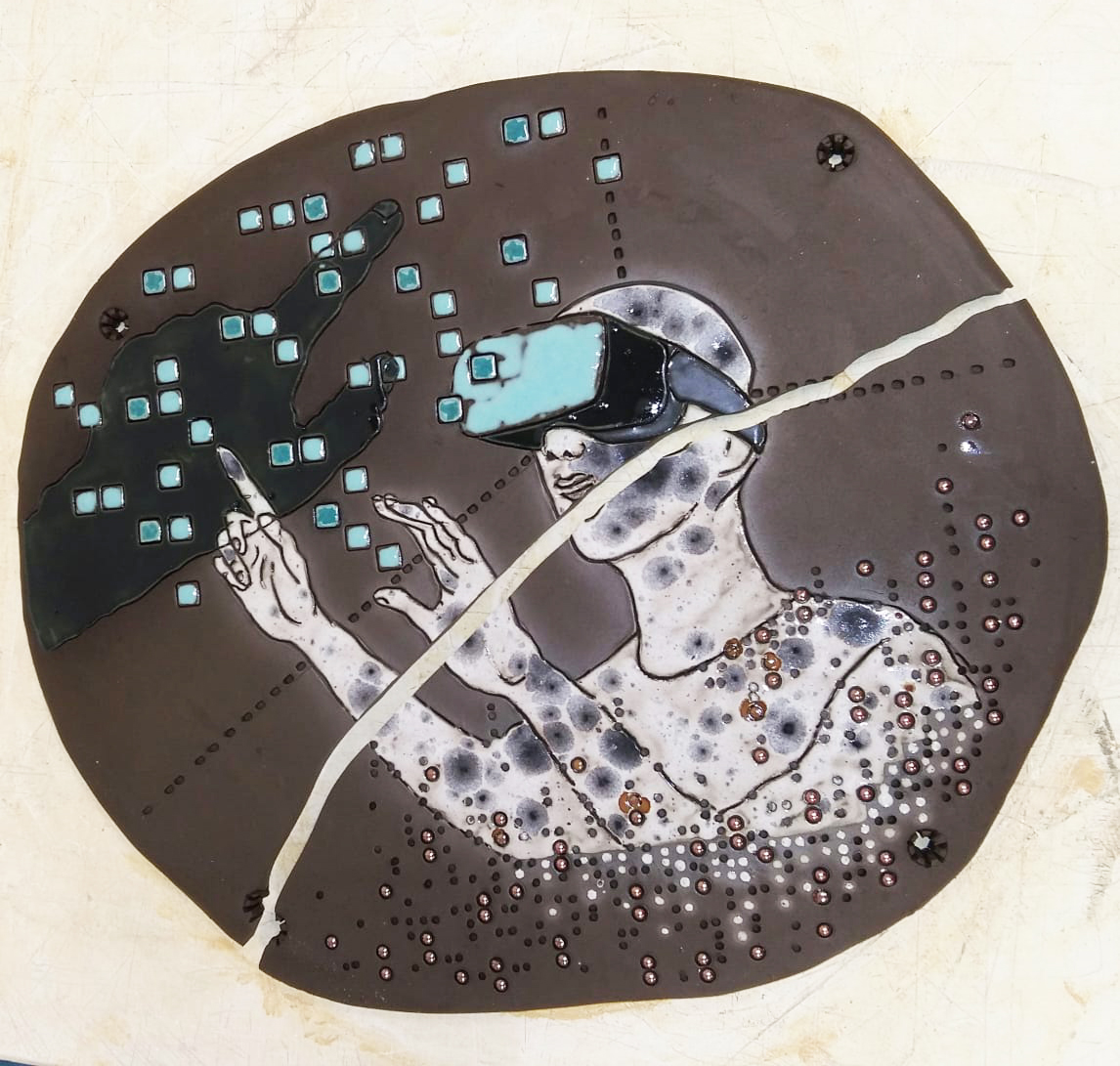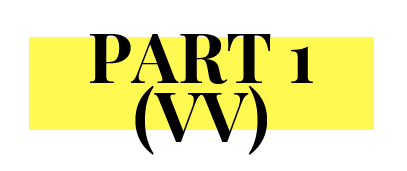PLATFORM GLITCH AESTHETICS

Die PLATFORM GLITCH AESTHETIC konnte im Jahr 2023 mit Hilfe der NEUSTART KULTUR-Förderung "Plattformen der Bildenden Kunst" aus den Mitteln der Bundesbeauftragten für Kultur und Medien gegründet werden. Das Ausstellungs- und Diskussionsprogramm mit Artefakten von Rosa Menkman, Nadja Verena Marcin, Katrin Leitner & Isaac Sullivan gab faszinierende Einblicke in die Alchemie der Glitch Art, des Glitch Feminismus und thematisiert Themen wie Algorithmensucht, KI-Detoxifikation und Halluzination.
Die Projektdokumentation trägt den Titel GLITCH PHENOMENA 3.0 und ist als kuratorisches Essay in PDF-Format GlitchPhenomena.3.0. open source verfügbar. Auf Anfrage kann die Institutssammlung in der Digitalvilla in Potsdam besichtigt werden. Unser kuratorisches Engagement wurzelt in dem Manifest GLITCH FEMINISM, das 2020 von der in New York lebenden Autorin, Aktivistin und Kuratorin Legacy Russell veröffentlicht wurde.
:
GLIT©H ::: hybr*d lecturƎ pƎrformancƎs
__noisy deep islands__
ZeM-Jahresschwerpunkt 2023/24
Die Glitch-Art-Lektionen „Kunst gewordener Verweigerung“, wie der Tagesspiegel, 12. April 2023 das Programm in der Digitialvilla am Hedy-Lamarr-Platz in Neubabelsberg titelte, wurden mit dem Symposion VERLUSTKONTROLLE__noisy deep islands__ fortgesetzt. Das Brandenburgische Zentrum für Medienwissenschaften hatte das Jahresthema 2023/24 VERLUSTKONTROLLE ausgeschrieben und die Digitalvilla/ GFZK e.V. hat eine der Förderungen für ein kreatives Veranstaltungsformat erhalten. Zur Veranstaltung luden Digitalvilla in Zusammenarbeit mit der GFZK e.V. am 4. + 8. Dezember zu sieben hybr*d lecturƎ pƎrformancƎs ein.
Eingeladen waren international bekannte Glitch-Art-Theoretiker*innen und Aktivist*innen wie Prof. Dr. Michael Betancourt (Georgia, USA, ZooM), Rosa Menkman (NL), der FU:BAR-Kurator und Künstler Ian Keaveny (Irland, ZooM), Niklas Washausen (ZooM) FB Kunstpädagogik und -Didaktik, Universität Potsdam, Till Rückwart, metaLAB (at) FU Berlin sowie Editorial Designer und künstlerischen Gestalter der Publikation GLITCH PHENOMENA 3.0. Luis A. Borchardt & Dean Schwarz, Graphik Designer (Mainz, Berlin, Köln, Amsterdam) eingeladen. Die Veranstaltung ist auf dem Youtube Kanal der PLATFORM GLITCH AESTHETICS dokumentiert.
Mit der Reflexion des Begriffs VERLUSTKONTROLLE erschlossen sich neue Perspektiven der GLITCH THEORIE. Es geht nicht um Kontrollverluste, sondern darum, Verluste zu protokollieren. Um die Spanne zwischen Wahrnehmung und reflektierter Kontrolle (des Verlusts) auszumessen, kommt dem GLITCH eine wichtige Signalfunktion zu. Zwar kann er auch nicht mehr das Unsichtbare des Verlusts sichtbar machen, aber er ist ein wirksamer Indikator für Systemdefizite, undokumentierter Funktionen und Sollbruchstellen im Digitalen und Nicht-Digitalen. Als solcher gibt er Einblicke in unerkannte Eigenschaften der Systeme und Prozesse. Dabei scheint ihm ein Wissen um Reparaturmöglichkeiten eingelagert. Als intentionaler GLITCH hält er Visualisierungsmöglichkeiten von gesellschaftlichen Brüchen bereit. Im Schatten des GLITCH scheinen verborgene Orte der Tarnung auf. Durch intelligente Strategien der Mimikry ist der GLITCH subversiv: ein Instrument subtiler Camouflage.
Weitere wichtige Ereignisse 2023: Die internationale PLATFORM GLITCH AESTHETICS mit Standort in Potsdam begleitete 2023 die Sotheby's Auktion GLITCH: BEYOND BINARY und die Ausstellung GLITCH. KUNST DER STÖRUNG in der Pinakothek der Moderne. Ein Überblick über das Jahr 2023 gibt ein Beitrag in KUNSTKRANT.NL; auf INSTAGRAM & FACEBOOK wurden und werden zusammen mit den Künstler*innen aktuelle Veranstaltungen geteilt. Jeden 4. Freitag im Monat trifft sich die PLATFORM GLITCH AESTHETICS zu einem Netzwerkaustausch via ZooM.
Moderation/ Konzept: Verena Voigt M.A. GFZK e.V. (Kuratorin)
In Zusammenarbeit mit Univ.-Prof. Dr.-Ing. Norbert Gronau, Lehrstuhl Wirtschaftsinformatik, Prozesse und Systeme.
Digitalvilla in Potsdam
Hedy-Lamarr-Platz, 14482 Potsdam
Für die Förderungen in 2023 bedanken wir uns herzlich bei den Künstler*innen und Kreativen, der STIFTUNG KUNSTFONDS und der Bundesbeauftragten für Kultur und Medien, der Digitalvilla und dem ZeM-Brandenburgische Zentrum für Medienwissenschaften. Den MEDIEN danken wir für die aufmerksame Begleitung des Aufbaus der PLATFORM GLITCH AESTHETICS; unser besonderer Dank gilt Pressestelle der Universität Potsdam.

Platform Glitch Aesthetics 2023
GlitchPhenomena.3.0.
PUBLIKATION
BOOK No. 1
VERENA VOIGT M.A.
A CURATORIAL ESSAY
